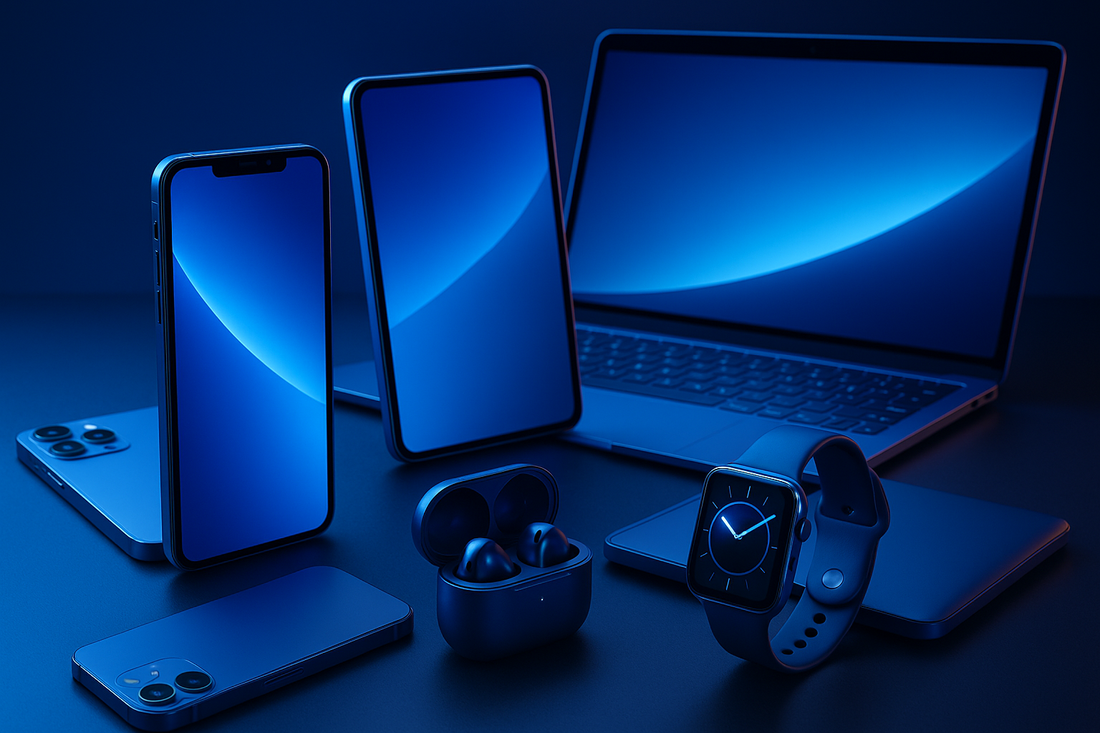
The Story of the World’s First Smartphone
Share
The Story of the World’s First Smartphone (Before the iPhone)

Table of Contents
Before the iPhone: A different world
When the iPhone debuted in 2007, many called it the “first smartphone.” But more than a decade earlier, IBM Simon quietly pioneered the category. The early 90s were a world of pagers, fax machines, and chunky cell phones. Into that landscape came a device that tried to do it all.
Simon wasn’t simply a step forward; it was a leap. It introduced consumers to the idea of convergence — one device handling multiple communication needs. That vision now seems obvious, but in 1994, it was revolutionary.
1994: The launch of IBM Simon
IBM partnered with BellSouth to launch the Simon Personal Communicator in August 1994. Priced at $1,099 (about $2,200 today), it combined a mobile phone with PDA features in a black brick weighing 500g.
The launch came during a time when cell phones were still luxury items, often reserved for executives. By marrying computing features with telephony, IBM and BellSouth hoped to define a new product category.

Design & Technical Specs
The Simon was bulky by modern standards, but its design reflected cutting-edge engineering of the early 90s. Its key specs included:
| Display | 4.5-inch monochrome LCD touchscreen (160 × 293 pixels) |
|---|---|
| Processor | 16 MHz NEC V30 (x86-compatible) |
| Memory | 1 MB RAM, 1 MB storage (expandable via PCMCIA cards) |
| Battery | NiCad battery, ~1 hour talk time |
| Weight | 510 grams |
| Network | AMPS (analog cellular) |
| Connectivity | RS-232 serial port, PCMCIA expansion |
While limited by today’s standards, Simon’s architecture represented a bold attempt to blend computing power with mobile communication.
What Simon could actually do
Simon wasn’t just a phone. It had a monochrome touchscreen (with stylus), ran apps, and featured PDA tools. Think of it as a proto-iPhone running on AA-sized ambition.
- Touchscreen with stylus input
- Email, fax, and pager functions
- Calendar, address book, notes, to-do lists
- Custom downloadable apps (via PCMCIA cards)
In many ways, it was a direct ancestor of today’s app-driven ecosystem.
Why it failed commercially
Despite being futuristic, Simon had major drawbacks:
- Battery life: barely 1 hour of talk time
- Heavy and bulky (half a kilo in your pocket)
- High cost and limited availability
- Slow market adoption: most consumers weren’t ready
In the end, only about 50,000 units were sold before it was discontinued in 1995.
Competitors & Market Context
IBM Simon wasn’t alone in exploring convergence. Around the same time, companies like Nokia, Ericsson, and Psion were developing advanced PDAs and early data phones. However, none integrated the breadth of Simon’s features into a single device.
Yet these rivals were often cheaper, more portable, or better supported. Nokia’s Communicator line, launched in 1996, arguably refined what Simon started — showing how timing was as critical as innovation.
Legacy: How Simon influenced smartphones
Even though Simon failed commercially, it planted seeds that later bloomed in devices like BlackBerry, Palm, and eventually the iPhone. It showed that consumers wanted more than just a phone — they wanted a pocket computer.
Influence on PDAs
Simon’s apps and touchscreen paved the way for PalmPilot and Windows CE devices.
Influence on phones
Showed manufacturers that integrated communication + computing was possible.
Influence on modern smartphones
Touch-based interaction and expandable apps foreshadowed the app stores and UIs we use today.
Collecting IBM Simon today
Because of its historical importance, surviving IBM Simon units are now valuable collector’s items. Working devices can fetch thousands at auction, especially if boxed with accessories.
For tech enthusiasts, Simon represents more than a collectible: it’s a tangible reminder of how far mobile technology has come in just three decades.
Shop modern smartphones & accessories
FAQ
- What was the first smartphone ever?
- The IBM Simon Personal Communicator, launched in 1994, is widely recognized as the first true smartphone.
- How much did IBM Simon cost?
- It launched at $1,099 (around $2,200 in today’s money).
- Why did it fail?
- Poor battery life, high cost, and limited market readiness kept sales low — but its influence lived on.
- What network did Simon use?
- It operated on the AMPS analog cellular network, common in the U.S. during the early 90s.
- How rare are surviving units today?
- Fewer than 50,000 units were ever sold, and intact boxed examples are now museum-worthy collectibles.
Sources & Further Reading
Primary references: IBM corporate archives, BellSouth press releases, Computerworld 1994 reviews, Smithsonian National Museum of American History, and IEEE Spectrum retrospective analyses.
Enjoyed this retro deep dive? Share it with a friend or cite it with a backlink to savytechgadgets.com.
